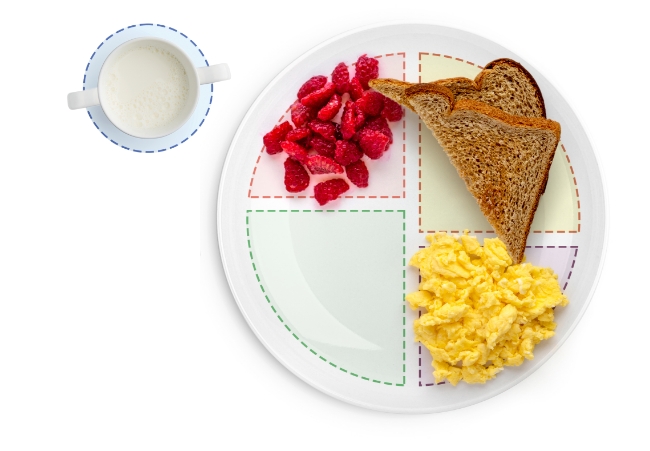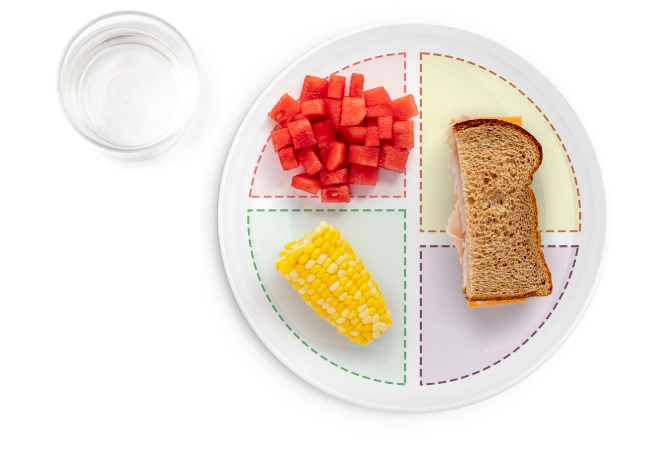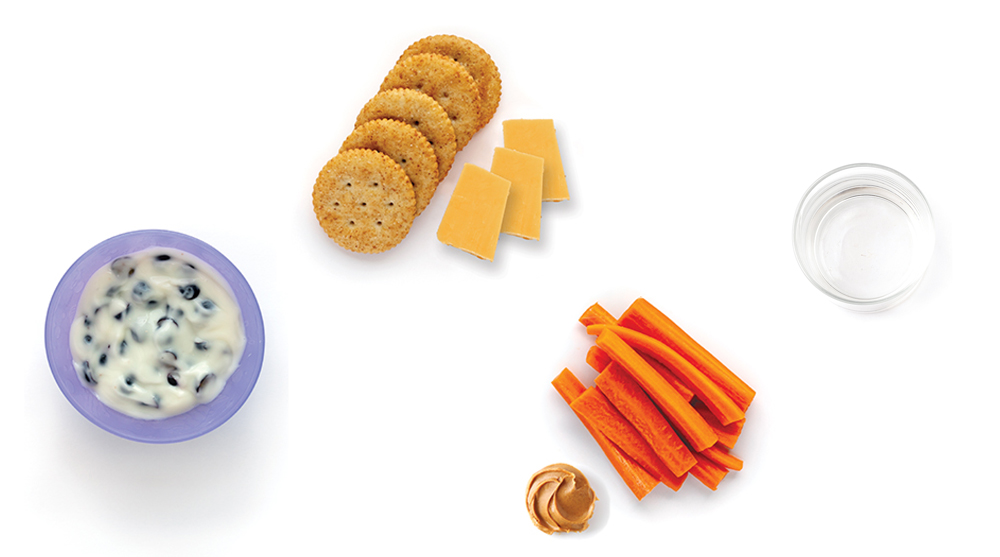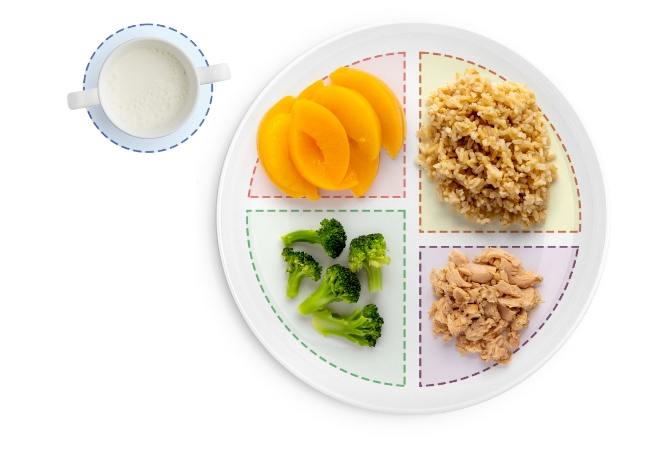

I need STRUCTURE AND SUPPORT to be a good eater.
To do my best with eating, I need healthy meal and snack options from you. It’s up to me to do my job with eating.
YOUR JOB IS TO DECIDE:
MY JOB IS TO DECIDE:
Don’t worry if I don’t want to eat a meal or snack.
Tell me when you will offer my next meal or snack.
I will probably be hungry by then.


Snacks help me get what I need to grow, play, and learn. My stomach is small, so I get hungry every 2 or 3 hours. Offer me one snack between breakfast and lunch, one snack between lunch and dinner, and maybe one snack before bedtime.




3 servings a day
1 serving = ½ cup
(1½ cups total)
Cooked or soft, raw fruit.
Mashed, sliced, or chopped.
Offer a variety: red, yellow, orange, blue, and green.
3 servings a day
1 serving = ½ cup
(1½ cups total)
Raw or cooked, mashed, sliced, or chopped vegetables.
Offer a variety: dark green, orange, red, yellow, and purple.
6-8 servings a day
1 serving = ½ ounce
(3-4 ounces total)
Whole grain bread, tortillas, rice, noodles.
Dry or cooked cereal.
3-4 servings a day
1 serving = 1 ounce
(3-4 ounces total)
Cooked lean meat, poultry, or seafood.
Eggs.
Cooked beans, peas, or tofu.
Peanut butter.
5 servings a day
1 serving = ½ cup
(2½ cups total)
Low-fat milk.
Yogurt.
Cheese.

Make sure foods are cut up small enough so I won’t choke on them.
Take me to the doctor for my check-ups.
Help me brush my teeth 2 times every day with a small, soft toothbrush and a pea-sized amount of fluoride toothpaste. Teach me how to spit out the toothpaste and floss my teeth every day.
We need to wash our hands often. Teach me how to wash my hands with warm water and soap. I need to wash them for 20 seconds, or the time it takes to sing “Row, Row, Row Your Boat.”
I need simple rules. Set limits on when, where, and how often we have screen time. Talk about what I’m learning as we watch together, and keep me safe from what I shouldn’t see. Let’s focus on each other during meals and snacks, not a screen.
Side-Lying Hold
This hold is useful when:
Cross-Cradle Hold
This hold is useful when:
Clutch or “Football” Hold
This hold is useful when:
Cradle Hold
This hold is useful when:
Laid-Back Hold
This hold is useful when: